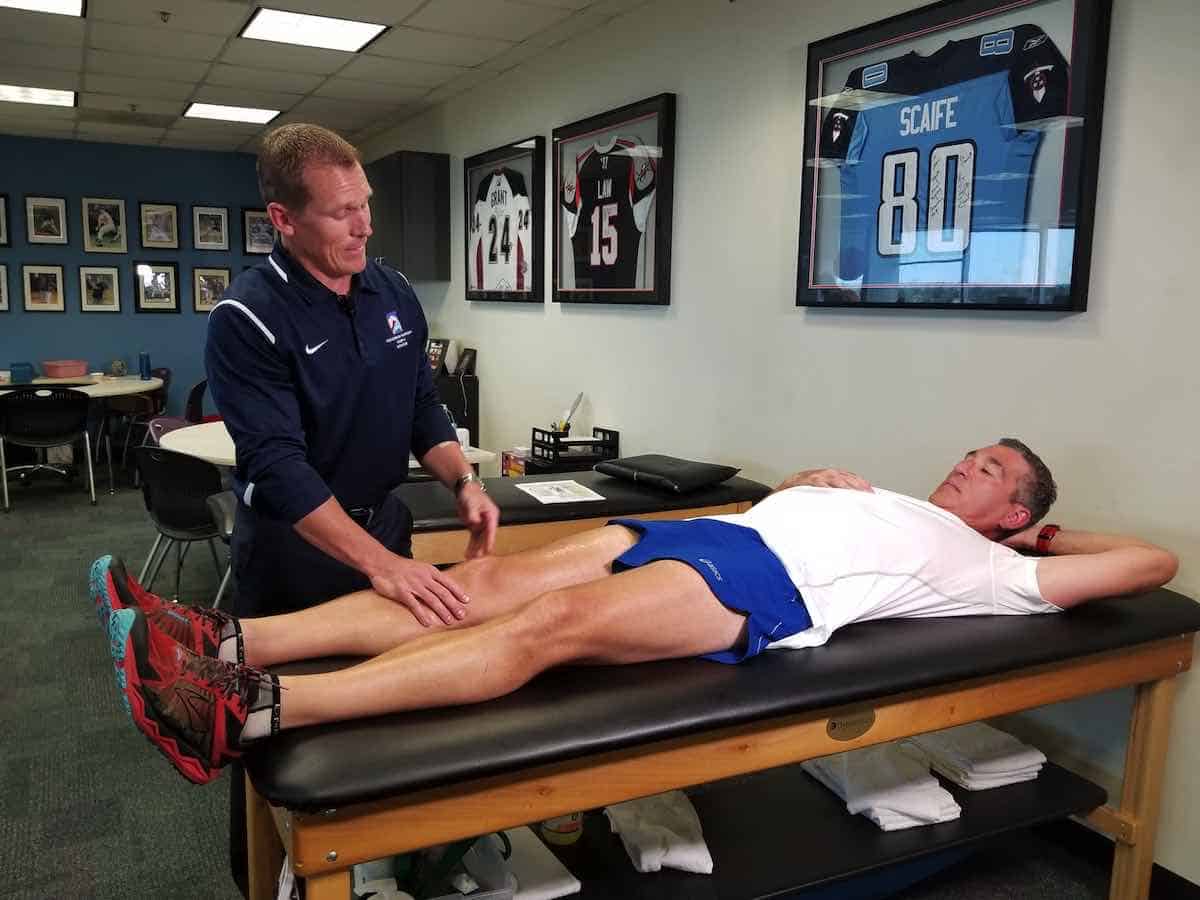Mike Allen Q&A with Runner’s Tribe
Mike Allen, PT, ATC is the UCHealth Director of Rehabilitation Services – South Metro Denver.

You’ve been working with 52-year old Colorado ultra runner Paul Hoover preparing him for his assault on the Leadville 100 this year on August 19. The previous year Paul collapsed at mile 42 with a lactic acid buildup in his leg and an injured piriformis sciatic nerve causing tightness in his hip flexor. When Paul first came to you in April did you think he’d be able to make the progress he has?
Whenever you are dealing with an endurance athlete with a chronic pain issue, you hold out optimism for improvement but are a bit reluctant to overpromise results. However, based on the improvement Paul demonstrated following his initial treatment I felt good that we had a chance to make a real impact on his training and his ability to compete in the event this year.
With the help of UCHealth Steadman Hawkins Clinic-Denver, you have access some unique sports performance technology. Can you tell us about how you began using the DARI technology that you have now to help numerous elite athletes across a spectrum of sports?
We’ve been using DARI for about four months now and it is amazing how the system is able to detect the smallest asymmetry or deviation from normal movement. Prior to DARI we would rate a particular movement as good, fair or poor; now we are able to place quantifiable data points to that movement. As a result, we are able to create more individualized programming and more precisely track improvement over time.
Once you have accessed the data findings and allocated points of correction and advancement upon the subject and in this case Paul, what kind of program did you implement to prepare him for the rigours of Leadville?
When he was evaluated by UCHealth Steadman Hawkins Clinic-Denver’s Dr. Braden Mayer, Paul’s pain was located primarily in his right posterior hip or buttock area. His treatment prior to coming to UCHealth Steadman Hawkins-Clinic Denver was focused in this area. Combining our clinical exam and the DARI scan, we found that Paul’s main issue was a restricted right hip flexor. In response, we focused our treatment on improving the mobility on the front side of Paul’s hip to bring the hip in balance. Using this approach, Paul demonstrated more than 50 percent reduction in pain following his first treatment.
How often did you assess Paul’s progress using DARI throughout his preparations? At what point did you see the most gains in corrections as per the data?
We will typically reassess an athlete every four to six weeks to enable us to see improvement in strength, power, balance and flexibility.
How much of how successful an athlete’s rehab post surgery is conducive to their mental attitude?
Without question, mental attitude and the ability to work through adversity plays a large role in an athlete’s ability to return to competition. After 20 years in the clinic, I’m still amazed at the wide variance in resiliency athletes with the same condition or surgical procedure demonstrate. Paul has had laser focus and determination through this process, which has enabled him to push through pain that others may have been unwilling to endure.
In your opinion does every athlete suffer from some biomechanical deficiency?
Yes, some more than others. Genetics certainly plays a role, with some athletes being more gifted than others. Supplementing running with well-designed strength and flexibility training can go a long way in preventing injuries. Controlling running volume and avoiding sharp increases in training volume and intensity are very important for avoiding injuries in athletes who are less biomechanically sound.
Should they all be trying to utilize the DARI technology?
DARI allows us to dissect these biomechanical faults and prescribed precise corrective exercises to improve imbalances.
What sport do you see the most injuries in?
Knee pain in runners ranks pretty high on the list. At UCHealth Steadman Hawkins Clinic-Denver, we see athletes participating in the full spectrum of athletic activities with each sport having its own nuance and injury pattern. It is well known that ACL injuries in girls soccer are reaching epidemic proportions. We certainly see our fair share of these athletes.
Where did you see most inefficiency in Paul and other distance runners and what are some examples of the exercises that are used to correct these areas?
Like most runners, Paul was well compensated with his running mechanics – meaning visually, he looked pretty sound. A large number of runners like Paul struggle with tight hip flexors and IT Bands that are largely associated with posterior chain weakness of the gluteal muscle groups. We use double/single bridges, side abductions and quadruped kickbacks to activate and strengthen the glutes.
How hard is it to change years of ingrained running inefficiency and would you say utilising DARI could significantly advance correcting these flaws?
Changing mechanics can be challenging. Using DARI to identify an imbalance then restoring normal motion in a joint is the first step in improving running mechanics. Running inefficiencies are often the result of a joint imbalance. If you don’t correct the imbalance, it is difficult or impossible to engrain a new and more efficient movement pattern. Our goal is to rebuild the foundation first, then we focus on skill development. From that, we try and bring the athlete as close to the norm as we can based on the runner’s overall potential.
Thank you
